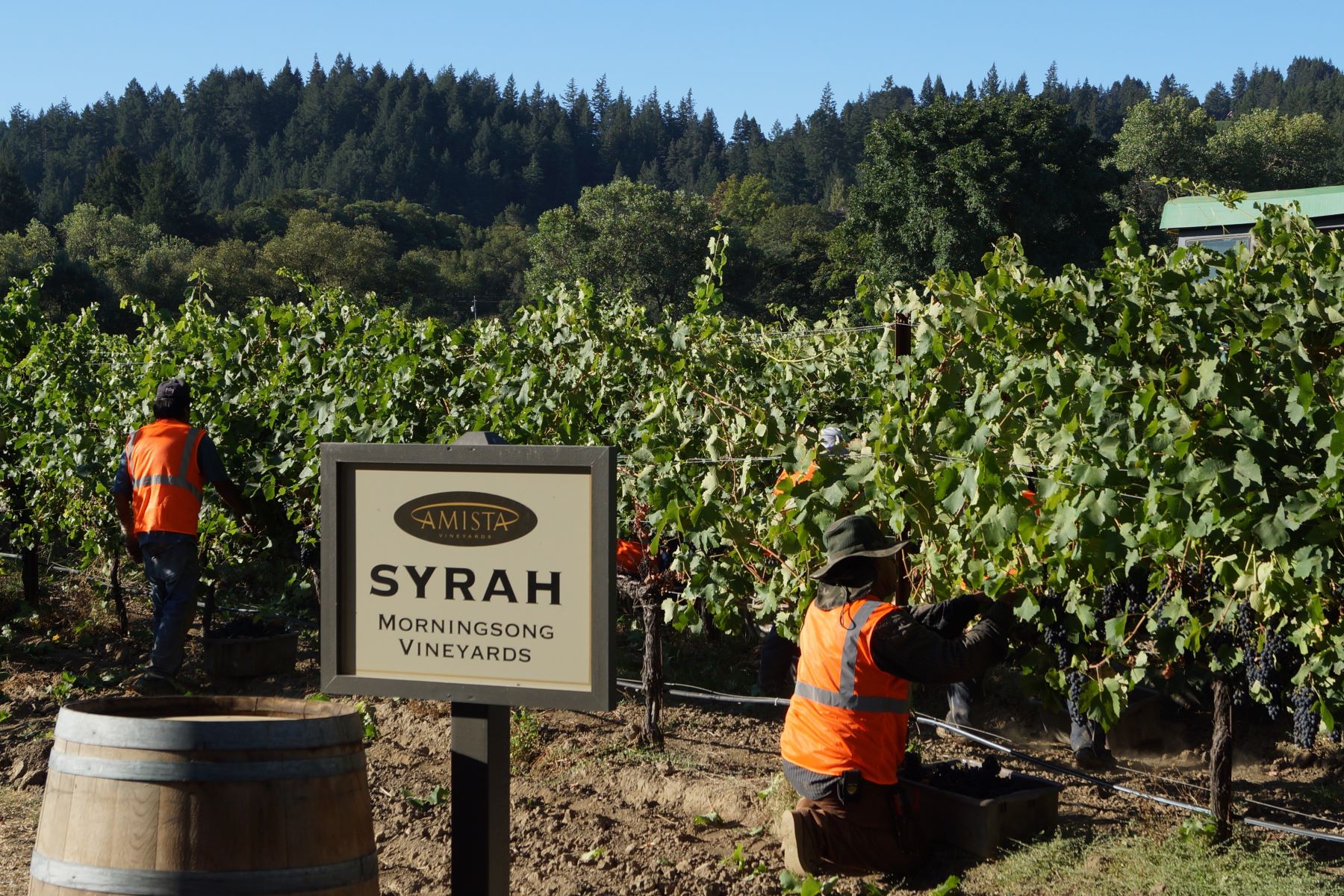Why Rhônes at Amista Vineyards?
The Story of Our Rhône Journey…
…and the spirit that shaped Amista.
As we celebrate our 20th anniversary, I'm excited to share a series of short weekly posts that take you behind the scenes, revealing memorable moments that have shaped our journey at Amista Vineyards.
Que Será, Será
This phrase, “what will be, will be,” captures the spirit of why we planted our first Syrah vines in the year 2000 in our recently acquired vineyards in Dry Creek Valley, just outside the charming town of Healdsburg. We’re not really sure why we planted Syrah, a Rhône variety, except it was being hailed as the “next big thing,” and we were eager to be part of its rise. Little did we know that shortly after planting, the movie Sideways would hit the screen, catapulting Pinot Noir into the spotlight and nudging Syrah offstage.
"Garage Syrah"
Undaunted by this development and the fact that the Syrah vines were young, Mike, my late husband and co-founder, saw their potential. Typically, a vineyard in its second year would drop its grapes, letting the vines strengthen without the demands of producing a crop. But Mike, eager to revive his love for winemaking that began nearly a decade earlier in our Silicon Valley home, had other plans. In 2002, he harvested three tons of Syrah from those young vines, and with the help of neighbors, family, and friends from Munich and Denver, he made our first wine in our garage. We fondly called it “Garage Syrah.”
The Launch of Amista
Garage Syrah was never meant for sale—it was a hobby, a chance to share something personal with our friends. But every time they came to taste it, they wanted more and kept asking when they could buy a bottle. Their encouragement gave us the nudge to consider making wine for others, and in 2004, Amista Vineyards was born. That initial Syrah, with all its humble beginnings, had woven a path for us into the world of Rhône wines.
Our Love for Rhônes Grows
While Syrah didn’t skyrocket to fame as expected, it became a cornerstone of our winemaking journey. We—and eventually our guests and members—fell in love with it. Over time, we began exploring other Rhône varieties, all thanks to that “gateway grape” of Syrah.
Expanding Our Rhône Collection
In 2011, we decided it was time to diversify. We were eager to experiment with more Rhône varieties but didn’t want to uproot our established Syrah vines. So, we opted for a grafting method called T-budding, placing buds of new varieties into small cuts on the existing vines. This way, we could grow new varieties—Grenache and Mourvèdre—without waiting the typical four years for the vines to mature. By the 2012 harvest, we had our first Grenache and Mourvèdre. We also created our first Rhône blend. We called it Tres, combining all three Rhône grapes: Grenache, Syrah, and Mourvèdre.
The Debut of Tres and Our First Blend
Tres quickly became a hit—and Mike’s new favorite. Winemaker Ashley Herzberg, who joined us in 2011, inspired us to try our hand at blending. Having always made single-varietal wines, we were hesitant, but Ashley’s excitement for a classic GSM blend (Grenache-Syrah-Mourvèdre) won us over. What began as an experiment quickly became a cherished addition to our lineup.
The Amista Rhône Lineup Today
Today, our estate-grown Rhône wines include Syrah, Grenache, Mourvèdre, and Tres, our Rhône-style blend. We also produce a Rosé de Tres, a refreshing blend of Grenache, Syrah, and Mourvèdre. We also make a unique collection of sparkling Rhône wines.
Why Rhônes?
When people ask why we chose Rhône varieties, I think back to the spirit that has shaped Amista. We didn’t have a grand plan or flawless reasoning. We simply followed our instincts, letting the path unfold. Along the way, we embraced challenges, unexpected delights, and every opportunity to learn and grow. Rhône grapes continue to guide our journey, surprising and inspiring us, and, above all, allowing us to share a piece of this adventure with others.
Still Thirsty?
If you want to learn more, here is a curated list of resources.
Mourvedre — A Guide to the Basics
How do you pronounce "Mourvèdre"?
What Do We Mean When We Say Rhône-style Wine?
